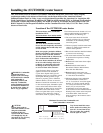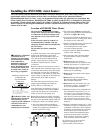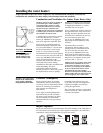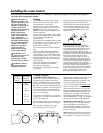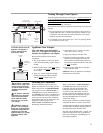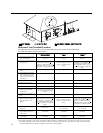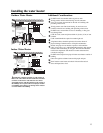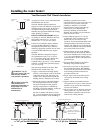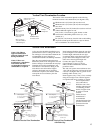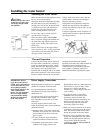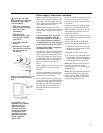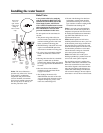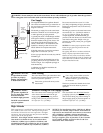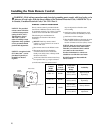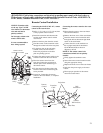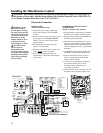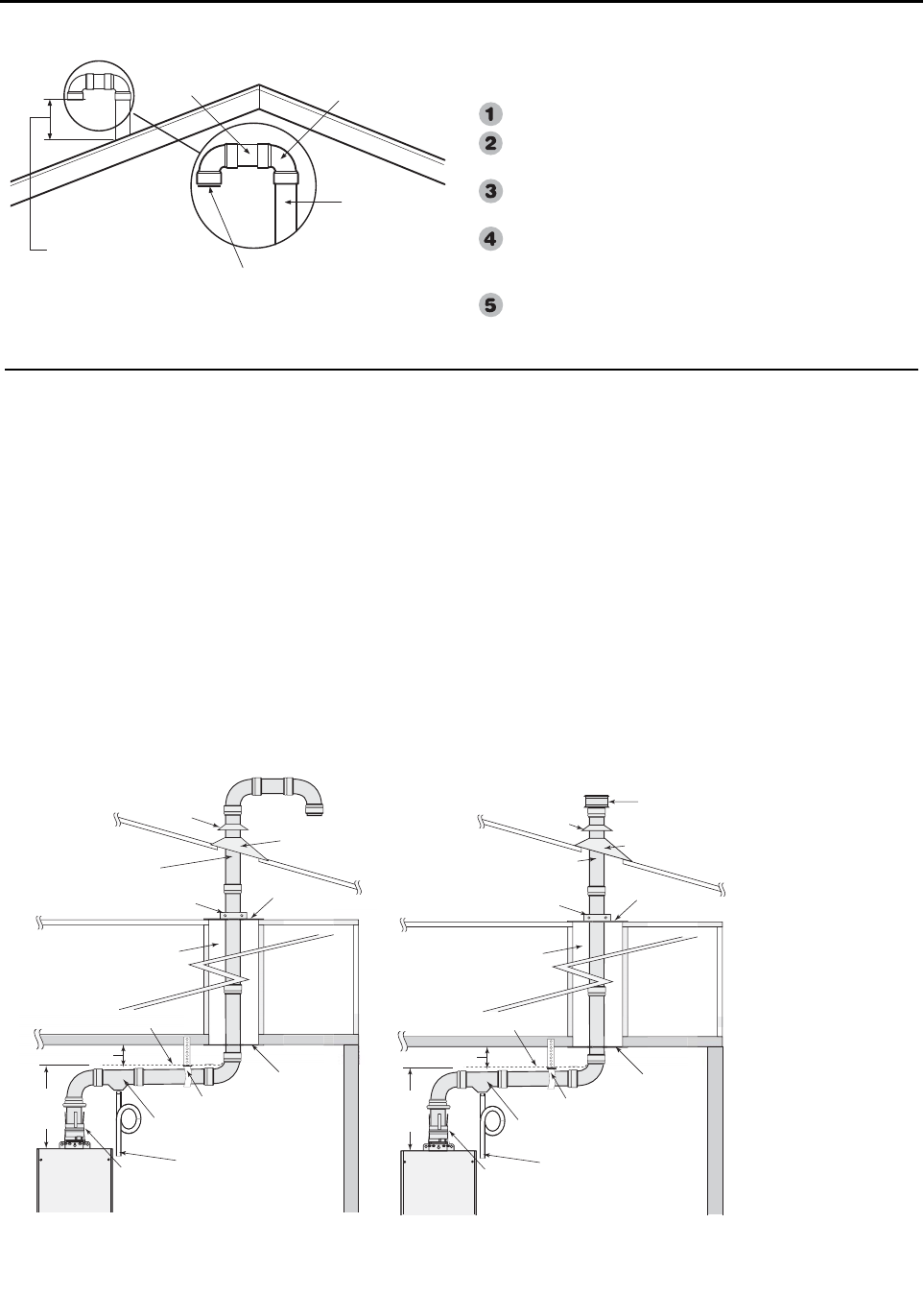
Vertical Vent Installation
A fire stop plate should be installed at every
penetration of a floor or ceiling if the vent is
not running in a fire-rated shaft. Maintain the
recommended air space clearance to
combustible materials and building insulation.
Once the vent terminal location has been
determined, make a hole through the roof and
interior ceiling to accommodate the vent pipe.
Complete the vent pipe installation to the
water heater’s vent connector fitting on the
water heater vent collar outlet. Support
vertical or horizontal runs as previously
mentioned. If required, use silicone sealant
at the point the vent connector joins the
water heater.
Install adequate flashing where the vent pipe
passes through the roof. Determine the vent
terminal height and install the vent pipe
accordingly. Refer to the diagram above for
proper vent terminal height. Connect vent
elbow onto vertical pipe through roof.
Connect short piece of vent pipe
(approximately 6” long [15 cm]) to
elbow, and the terminal elbow with the
protective screen.
The vent roof system must terminate at least
1 foot (30 cm) above the roof line and at least
2 feet (61 cm) higher than any portion of the
building within 10 feet (3 m).
Install supports every 5 feet (1.5 m) vertically
along the vent pipe route. Vertical supports
are required after every transition to vertical
and are required after
every offset elbow.
When the vent is free-
standing and penetrates
a roof/ceiling, another
means of support must
be used at a second
location.
Follow the vent
manufacturer’s
recommended
installation instructions
provided with the vent
purchased from the
manufacturer.
Chase Requires
6" (15 cm) Clearance
to Combustibles
Firestop
Firestop
Roof Jack
Adjustable
Roof Flashing
Ve n t
Adapter
3" (8 cm) Clearance
Support
Hanger
Condensate
Trap
To Drain. Dispose of
condensate in accordance
with local codes
Storm
Collar
Support
Clamp
1/4" per foot upward slope
2'
(61 cm)
Max
Standard Vertical Vent Termination
Vertical Vent Termination Location
The location of the vent terminal depends on the following
minimum clearances and considerations (see diagram at left):
Minimum twelve (12) inches
(30 cm)
above roof.
Minimum twelve (12) inches
(30 cm)
above anticipated
snow level.
Maximum twenty-four (24) inches
(60 cm)
above roof level
without additional support for vent.
Four (4) feet
(1.2 m)
from any gable, dormer or other
roof structure with building interior access (i.e., vent,
window, etc.).
Ten (10) feet
(3 m)
from any forced air inlet to the building.
Any fresh or make-up air inlet such as a dryer or furnace
area is considered to be a forced air inlet.
Min. 12"
(30 cm)
Above Roof
Min. 12"
(30 cm)
Above Anticipated
Snow Level
Max. 24"
(60 cm)
Above Roof (Without
Additional Support)
Vent Pipe
Through Roof
Elbow
Termination Elbow
w/ Protective Screen
Small (6” min)
(15 cm)
section of vent
Notice: Only Rheem
approved termination
and parts should be used
during installation.
Notice: Follow vent
manufacturer’s installation
instructions and their
recommended clearances to
combustibles as required.
15
Chase Requires
6" (15 cm) Clearance
to Combustibles
Firestop
Firestop
Roof Jack
Rain Cap
Adjustable
Roof
Flashing
Ve nt
Adapter
3" (8 cm) Clearance
Support
Hanger
Condensate
Trap
To Drain. Dispose of
condensate in accordance
to local codes
Storm
Collar
Support
Clamp
1/4" per foot upward slope
2'
(61 cm)
Max
Alternate Vertical Vent Termination
with Rain Cap
Vent Pipe
Vent Pipe



